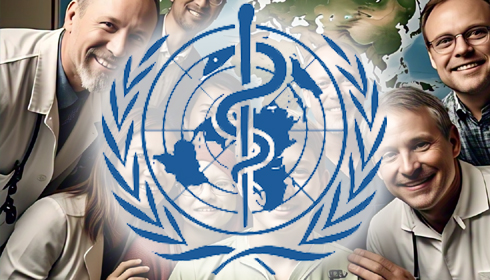
WHO Highlights Critical Gaps in Fungal Disease Management
The World Health Organisation (WHO) has released its inaugural report, highlighting the significant deficiency of medicines and diagnostic tools for invasive fungal diseases. The documents highlight a pressing requirement for innovative research and development (R&D) aimed at tackling the escalating crisis in global health, particularly in low- and middle-income countries (LMICs).
Fungal infections, including candida responsible for oral and vaginal thrush, are increasingly demonstrating resistance to standard treatments. Individuals with compromised immune systems are primarily affected—this includes patients undergoing cancer chemotherapy, those living with HIV, and individuals recovering from organ transplants. Vulnerable populations encounter heightened risks, underscoring the necessity for strong diagnostic capabilities and efficient treatment options.
Dr. Yukiko Nakatani, WHO Assistant Director-General for Antimicrobial Resistance ad interim, highlighted the seriousness of the issue: “Invasive fungal infections pose a significant risk to the lives of the most vulnerable populations, yet countries are deficient in the necessary treatments to preserve life.” The current pipeline for new antifungal drugs and diagnostics is inadequate, and there is a significant lack of fungal testing capabilities in low- and middle-income countries, including at the district hospital level. The existing diagnostic gap results in an unclear understanding of the causes of individuals' suffering, complicating the process of providing appropriate treatments.
The WHO reports indicate that fungi categorised as 'critical priority' in the fungal priority pathogens list (FPPL) exhibit mortality rates reaching up to 88%. This statistic raises concerns in light of the increasing population of immunocompromised patients globally, a trend that may contribute to a rise in invasive fungal diseases. The reports outline a limited process in the development of effective treatments, indicating that regulatory authorities in major markets such as the United States, the European Union, and China have approved only four new antifungal drugs in the past decade.
Nine antifungal medicines are currently undergoing clinical development targeting the most dangerous fungi. Of these, only three candidates have advanced to phase 3, the final stage of clinical trials. The current pipeline consists of merely 22 drugs in preclinical development, indicating a potential shortfall in addressing the high dropout rates and considerable challenges faced during development. Current treatments are associated with several challenges, including significant side effects, common drug-drug interactions, restricted dosage forms, and the requirement for extended hospital admissions. There is a significant demand for medications that provide broad-spectrum efficacy against severe infections, particularly for children who frequently receive insufficient attention in clinical trials related to paediatric dosing and age-appropriate formulations.
In conjunction with the medicines report, the WHO’s diagnostics report provides a clear overview of the existing situation. Tests for fungal priority pathogens are available; however, their dependence on advanced laboratory facilities and skilled personnel limits accessibility for many low- and middle-income countries (LMICs). The diagnostic tools exhibit constraints regarding their scope, accuracy, and turnaround time. Consequently, health workers often do not possess the essential knowledge required to accurately identify and manage these infections, which negatively impacts patient outcomes.
The WHO has put forth a multifaceted strategy that emphasises the importance of global surveillance, improves financial incentives for drug discovery, and allocates funds for basic research aimed at identifying new targets related to fungi. The organisation promotes the advancement of point-of-care diagnostic tools designed to be faster, more accurate, and accessible in resource-limited environments.
The WHO’s inaugural reports highlight significant concerns that demand attention from the global health community. The findings regarding inadequate research and development, as well as diagnostic capabilities for fungal diseases, highlight the need for prompt and coordinated responses. The reports outline a clear roadmap for addressing the significant challenges faced, especially in low- and middle-income countries. The emphasis should now be on leveraging innovation and fostering international collaboration to guarantee that the most vulnerable populations obtain the essential care they require.